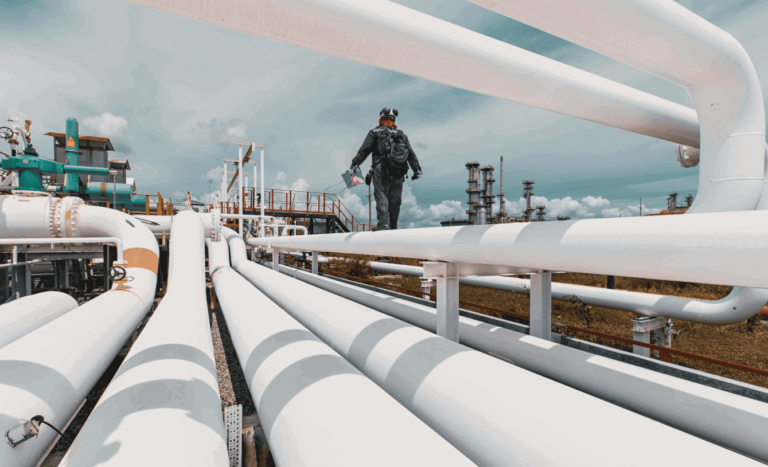Nepal and India have worked together on a major energy project. The Motihari-Amlekhgunj oil pipeline is the first cross-border petroleum pipeline in South Asia. It has transformed Nepal’s energy supply and economy.
Lower Costs and More Savings
The pipeline has helped Nepal save ₹200 crore every year. This has led to lower fuel prices for consumers. A two-rupee drop per liter might seem small, but it adds up. It reduces transportation costs, making goods cheaper. It also supports industries, helping them produce more while spending less. This reduces Nepal’s need for imports, strengthening the economy and creating jobs. The savings from this project do more than cut fuel costs. They support national development.
Boosting the Economy
Cheaper fuel benefits businesses and consumers. Lower transportation costs mean lower prices for goods. Industries save money and produce more. This creates jobs and encourages local investment. The impact reaches every part of the economy. More affordable energy leads to stronger businesses, stable markets, and better opportunities for people. This helps Nepal reduce its reliance on foreign products and strengthen its industries.
Securing Energy Supply
Nepal has faced fuel shortages in the past. Long lines at gas stations were common. During the 2015 blockade, fuel was scarce, and daily life was difficult. Now, the pipeline moves 300,000 liters of petrol at once. This ensures a steady supply. In the past, fuel delivery by truck took days. The pipeline has removed these delays. Businesses now have a reliable fuel supply. Citizens no longer worry about shortages. Nepal is now better prepared for future challenges.
Expanding Storage for the Future
Fuel demand is increasing, though electric vehicles are slowing the rise. Nepal is building large storage facilities in Chitwan, Jhapa, and Amlekhgunj. These will store reserves for emergencies. With help from the Indian Oil Corporation (IOC), Nepal will have the capacity to store 91,000 kiloliters of fuel. This ensures supply security and allows for better planning.
Stopping Fuel Theft and Adulteration
Before the pipeline, fuel transport had many problems. Theft and adulteration were common. Kerosene was sometimes mixed with diesel to cheat customers. The pipeline has ended these issues. Fuel now reaches consumers safely, without contamination. Nepal is also adding tracking systems to fuel tankers for extra security. This improves government revenue, protects roads from heavy truck damage, and ensures clean fuel for consumers.
Strengthening Nepal-India Ties
Nepal and India have traded fuel for over 50 years. This pipeline represents a new level of cooperation. It has created mutual benefits, stable pricing, and improved trust. India is now more than a supplier. It is a key development partner. This success shows that regional partnerships can work when both sides share a vision. It also sets the stage for future cross-border infrastructure projects.
Fast Completion of the Project
The project was completed in just 15 months, half the expected time. Local governments, communities, and officials worked together to remove obstacles. This cooperation helped speed up the process. Nepal plans to apply these lessons to upcoming pipeline projects. The Amlekhgunj-Chitwan and Siliguri-Jhapa pipelines are expected to be completed in 36 months. Faster project completion means quicker benefits for the people.
Supporting Long-Term Energy Goals
Nepal relies on petroleum products for many sectors. Remote areas, agriculture, hydropower projects, and industries depend on fuel. While Nepal aims to switch to renewable energy in the future, a stable petroleum supply is necessary for now. The pipeline helps Nepal build strong infrastructure, making a smooth transition to clean energy easier.
Overcoming Challenges
One major challenge was convincing landowners to support the project. Many feared explosions or damage to their land. The government explained that the pipeline runs deep underground and has safety systems in place. These efforts helped ease concerns and gain public trust. Transparent communication played a key role in resolving these issues. Nepal can use these lessons for future projects to reduce delays and resistance.
Gaining Technical Knowledge
The pipeline was South Asia’s first, and there were doubts about safety. Today, Nepal’s teams have mastered its operation. They can now monitor and manage the pipeline without external help. This project has created jobs and increased Nepal’s technical expertise. The skills gained will help Nepal build and manage more energy projects in the future.
Opening Doors for Future Projects
This project has set a strong foundation for future cross-border collaborations. Nepal and India have improved their technical and negotiation processes. The success of the pipeline has shown that with trust and proper execution, complex projects can succeed. With this experience, Nepal is ready for more ambitious energy projects, including renewable energy and regional power-sharing initiatives.
The Motihari-Amlekhgunj pipeline is more than just an energy project. It is a symbol of progress, cooperation, and economic growth. It has improved Nepal’s energy security, reduced costs, and strengthened ties with India. As Nepal continues to expand its energy infrastructure, this project serves as a model for future development.
To read more on Nepal’s energy developments, visit Nepal Monitor.


